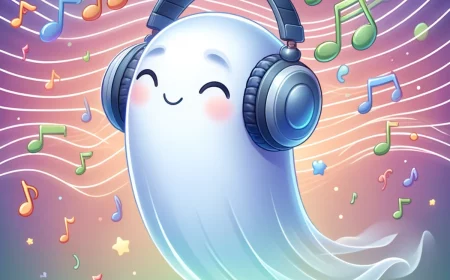A Jeweler’s Guide to Mood Rings: What The Colors Actually Mean
You know, after more than twenty years working with jewelry, I’ve seen it all. From priceless heirlooms to simple wedding bands. But every so often, something comes across my workbench that just makes me smile: a mood ring. For a lot of people, they’re just a fun throwback, a piece of nostalgia. I see them a little differently, though. To me, they’re a clever little piece of material science you can wear right on your finger.
In this article
Let’s get one thing straight: they aren’t magic. They can’t actually read your mind. What they can do, however, is react to real, physical changes in your body temperature. Once you understand the science, the mystery fades, but honestly, a whole new level of appreciation takes its place. It goes from being a novelty to a genuinely fascinating object. So, let’s dive into what I’ve learned from handling and explaining these rings for years—what’s really inside that ‘stone,’ how to spot a good one, and what those colors are truly telling you.
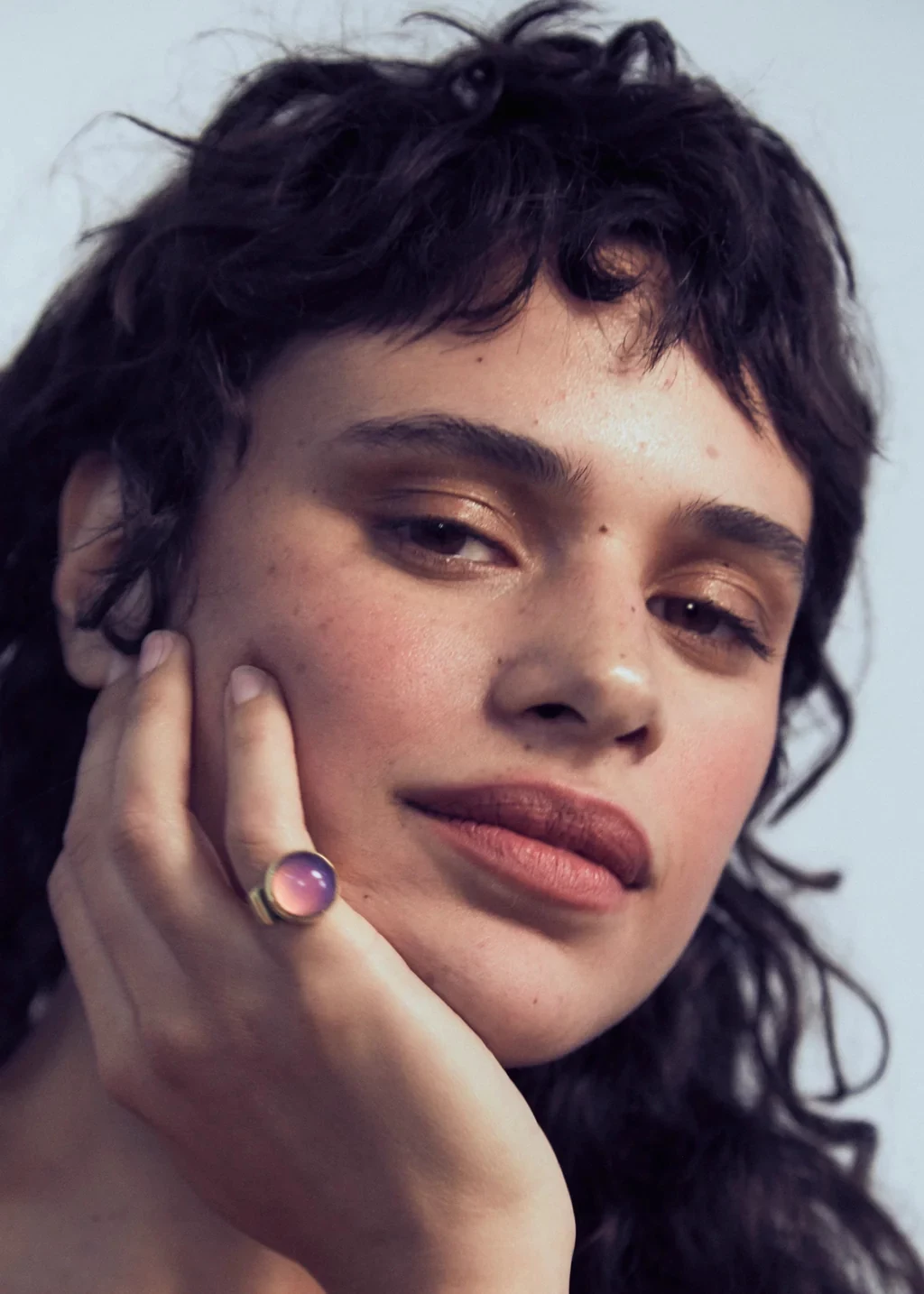
The Secret Inside the Stone
To really get a mood ring, you have to know what’s under that clear dome. It’s not a gemstone at all, but a tiny, sealed capsule filled with something called thermochromic liquid crystals. It sounds complicated, but the name gives it away: ‘thermo’ for heat, and ‘chromic’ for color. They’re simply crystals that change color based on temperature. Simple as that.
So, What Are Liquid Crystals?
Think about the states of matter: solid, liquid, gas. Well, liquid crystals are a weird and wonderful fourth state, caught somewhere between a solid and a liquid. Their molecules can flow around like a liquid, but they also maintain a specific, organized pattern, like a solid. Imagine a box of pencils. Tipped over on a table, they’re a jumbled mess—that’s like a liquid. Stacked neatly, they’re ordered—that’s like a solid. Liquid crystals are like having that neat stack of pencils, but the whole stack can still slide and move as one unit.
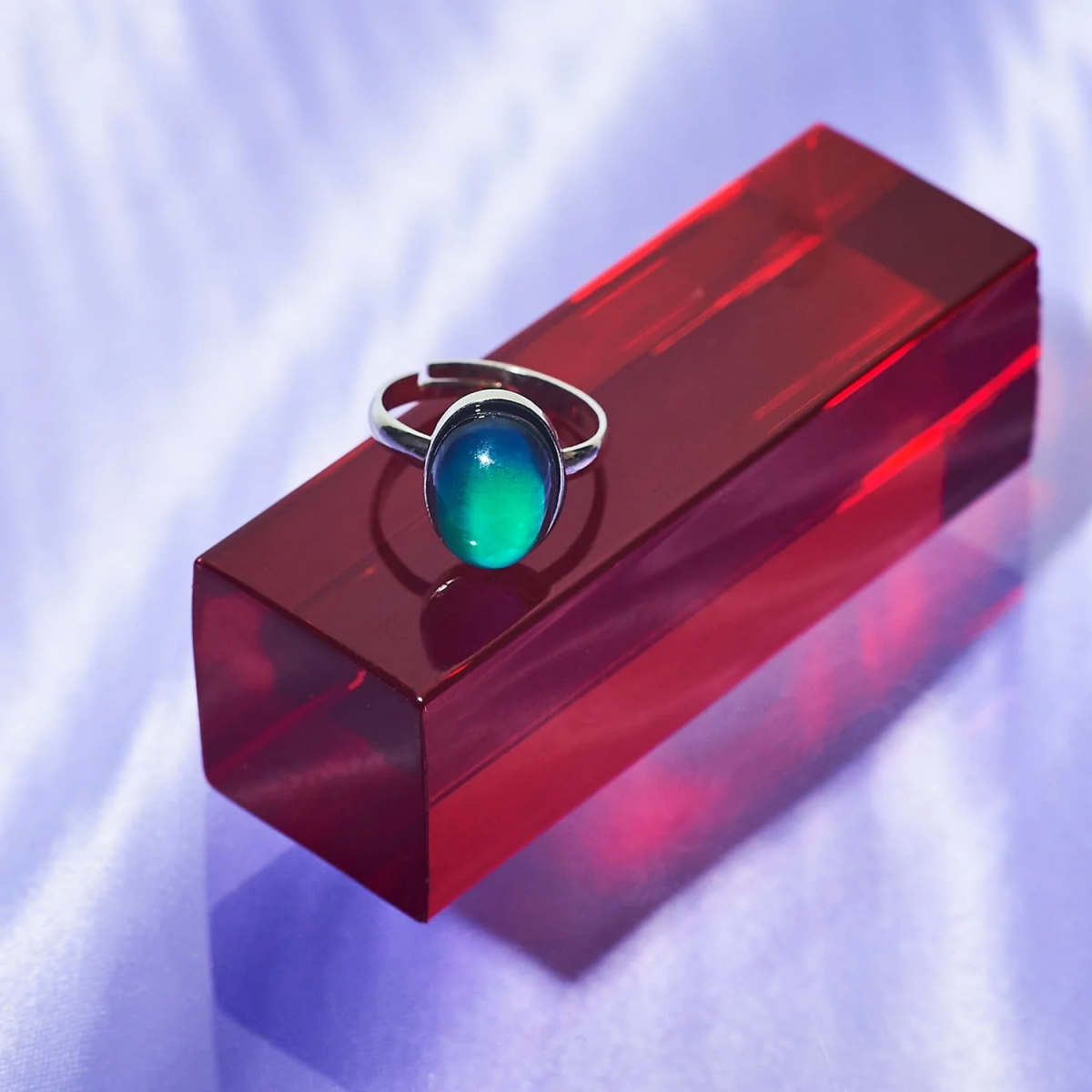
The specific kind in mood rings have their molecules arranged in a twisted, spiral structure. And that spiral is the key to everything.
How Temperature Makes Color Happen
The color you see is just light bouncing off that spiral structure. As the temperature changes, the spiral inside the liquid crystals either twists tighter or unwinds.
- When you’re cold: The spiral twists up tightly. This tight structure reflects shorter wavelengths of light, which our eyes see as deep blue or even violet.
- As you warm up: The spiral starts to relax and untwist. This reflects slightly longer wavelengths, shifting the color from blue into green.
- When you’re warm: The spiral is very relaxed and untwisted. This wide-open structure reflects the longest visible wavelengths of light, which we see as yellow and even reddish tones.
By the way, the crystals themselves aren’t colored. They’re just reflecting specific colors of light while absorbing the others. It’s the same incredible process that gives peacock feathers and some butterfly wings their shimmering, iridescent look.
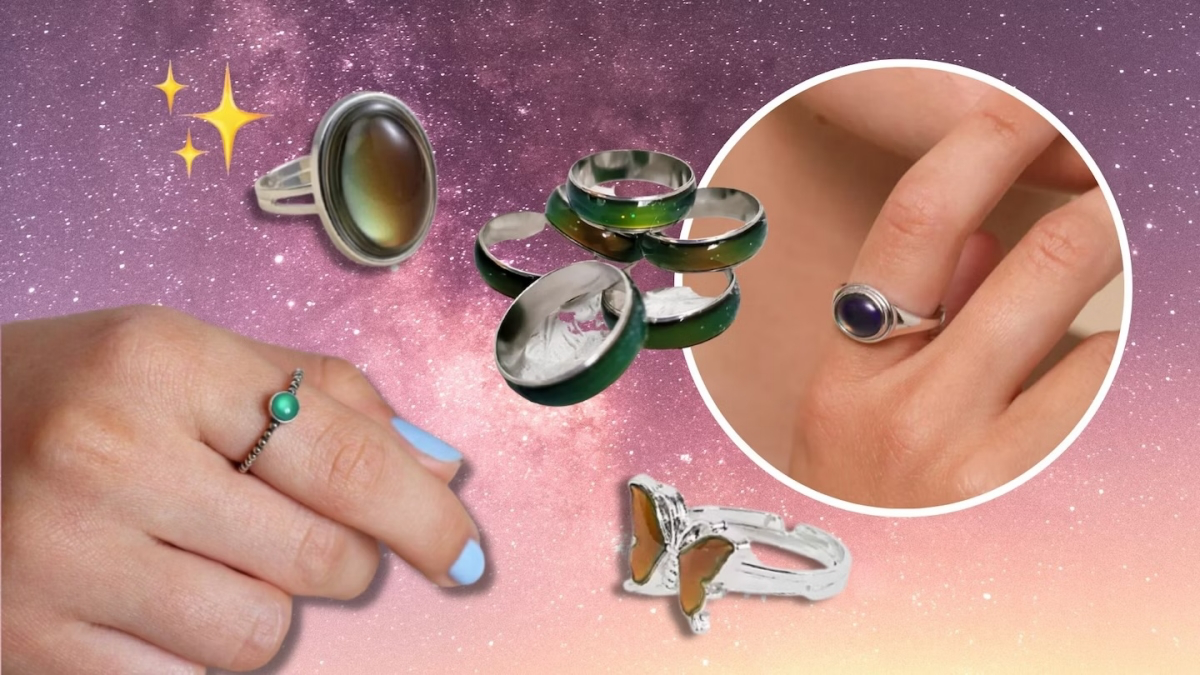
Oh yeah, and here’s a little pro secret: the crystals are always placed on a black background. Without that dark surface, the colors would look faint and washed out. The black backing absorbs all the extra light, making the reflected color pop. If a mood ring ever looks dead and gray, it’s often because the crystal layer has separated from its black backing.
How to Spot a Quality Mood Ring
Not all mood rings are made the same—not by a long shot. I can usually tell the quality in a second. The price almost always comes down to the materials and the construction, which affects how long the ring will last and how well it actually works.
The ‘Stone’ Itself (The Cabochon)
That clear dome on top is called a cabochon, and its job is to protect the sensitive liquid crystals inside. The material it’s made from is a huge tell.

- Plastic/Acrylic: This is what you’ll find on the cheapest novelty rings. It’s super lightweight, but it scratches if you just look at it wrong. Over time, those scratches make the surface look dull, and the plastic can turn yellow.
- Glass: A solid step up. Glass is way more scratch-resistant and offers much better clarity, so the colors look sharper and more vibrant. Most decent modern rings and vintage ones use glass.
- Quartz: This is the top-tier material. Quartz is a natural mineral that’s significantly harder than glass. It has fantastic optical clarity, giving you the most brilliant color show. It resists scratches and will stay crystal clear for years.
The Band and Overall Cost
The ring’s band affects its price, comfort, and how long it’ll last. Here’s a quick breakdown of what you can expect to pay:
For a basic ring with a plated base metal band and a plastic top, you’re looking at around $5 to $15. They’re fun, but the plating can wear off pretty quickly, sometimes exposing base metals like nickel that can irritate sensitive skin.
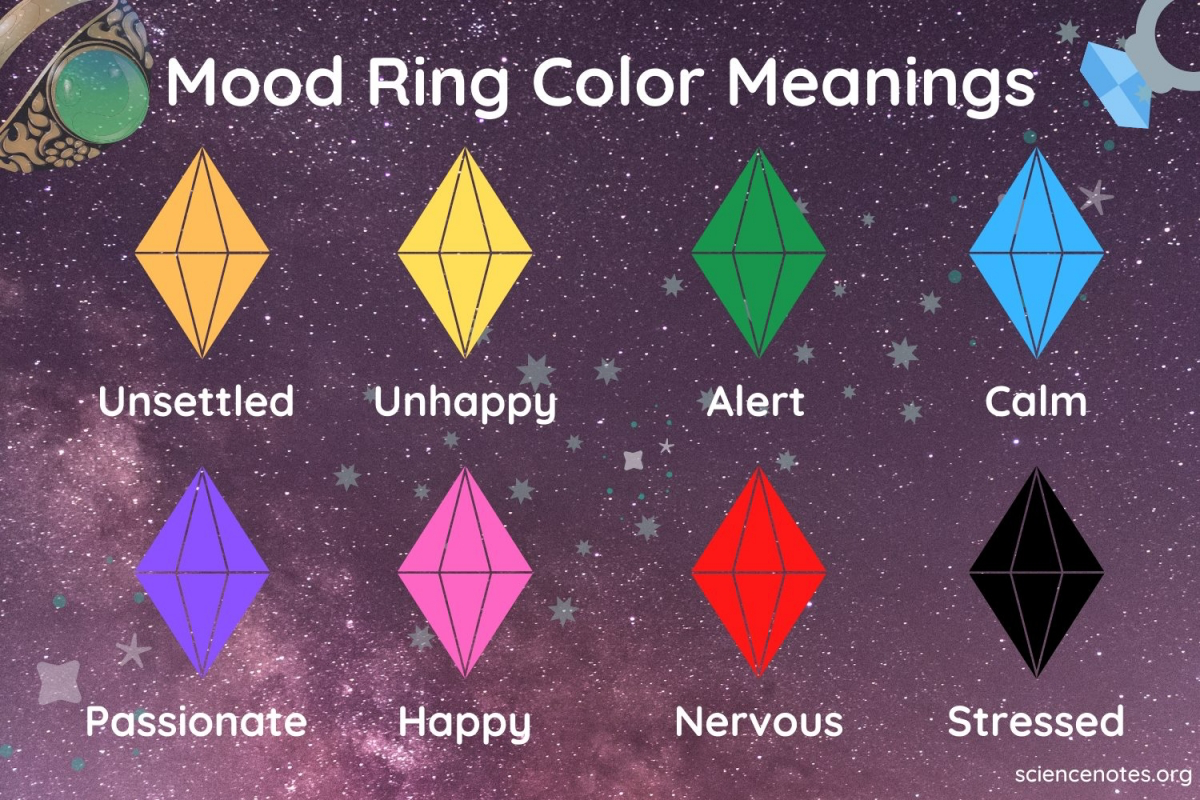
A much better bet is a ring with a stainless steel band and a glass cabochon. These are durable, hypoallergenic for most people, and won’t tarnish. Expect to pay in the $20 to $40 range for one of these. It’s a great sweet spot for quality and value.
For the best quality, you’ll want a sterling silver band, usually paired with a quartz cabochon. These are beautiful, hold their value, and are great for sensitive skin. A well-made silver and quartz mood ring can run anywhere from $50 to $150 or more, depending on the craftsmanship.
The Seal: A Ring’s Biggest Weakness
Heads up! The number one reason a mood ring dies is a broken seal. The liquid crystals are incredibly sensitive to moisture. If even a drop of water gets in, it permanently kills the color-changing effect, and the ring turns black for good. This is almost always the problem when someone brings me a “broken” mood ring.

Where to Find a Good One
So, where should you look? If you want something that will last, skip the checkout counter novelties. For high-quality, unique pieces, I always tell people to check out independent jewelers on sites like Etsy who work with sterling silver and quartz.
For the best bang for your buck, search online for a “stainless steel mood ring.” You’ll find durable, good-looking options that won’t break the bank. And here’s a quick tip for when you’re shopping: try a quick quality test. Hold the ring tightly in your palm for 30 seconds or gently breathe warm air onto the stone. A quality ring should show a clear, quick, and vibrant color shift. If it’s sluggish or the colors are muddy, it might be a sign of a cheap mixture.
Decoding the Colors: What They Really Mean
Alright, this is the part everyone cares about. Remember, the ring is basically a thermometer for your finger. It measures your surface skin temperature, which is often tied to your emotional state through your body’s natural reactions.

When you’re stressed, your body goes into ‘fight or flight’ mode and pulls blood away from your skin to your major organs. Your hands get cold. When you’re relaxed or happy, the opposite happens—blood vessels expand, and your skin warms up. It’s that simple.
- Black or Gray (Very Cold): The ring is essentially ‘off.’ This usually means it’s sitting on a table, or your hands are very cold. Emotionally, this can correspond to moments of high stress or fear when your body has restricted circulation to your fingers.
- Brown or Amber (Cool): The crystals are just starting to wake up. This can indicate a state of unease, nervousness, or distraction.
- Green (Average): This is the baseline, the neutral gear. It typically means you’re calm and your body is in a state of equilibrium. A well-made ring will probably sit in this color a lot of the time.
- Blue-Green or Light Blue (Slightly Warm): Things are looking up! This color is often associated with being relaxed, content, and sociable. Blood flow is good and steady.
- Dark Blue or Violet (Warm): Your skin is quite warm now. This often points to heightened positive emotions—passion, excitement, or deep happiness.
- Red or Pink (Very Warm): The ring is at the top of its temperature range. This could signal very intense feelings like anger or passion, but it could also just mean you’re exercising, have a fever, or are holding a hot cup of coffee!
I once had a customer who was worried because her ring was always black. She was sure she was chronically stressed. I asked her about her job—turns out, she worked in a refrigerated warehouse! I held the ring in my warm hand for a minute, and it cycled through a beautiful rainbow of colors. The ring was fine; her environment was just cold. It’s the perfect reminder to always consider the context!
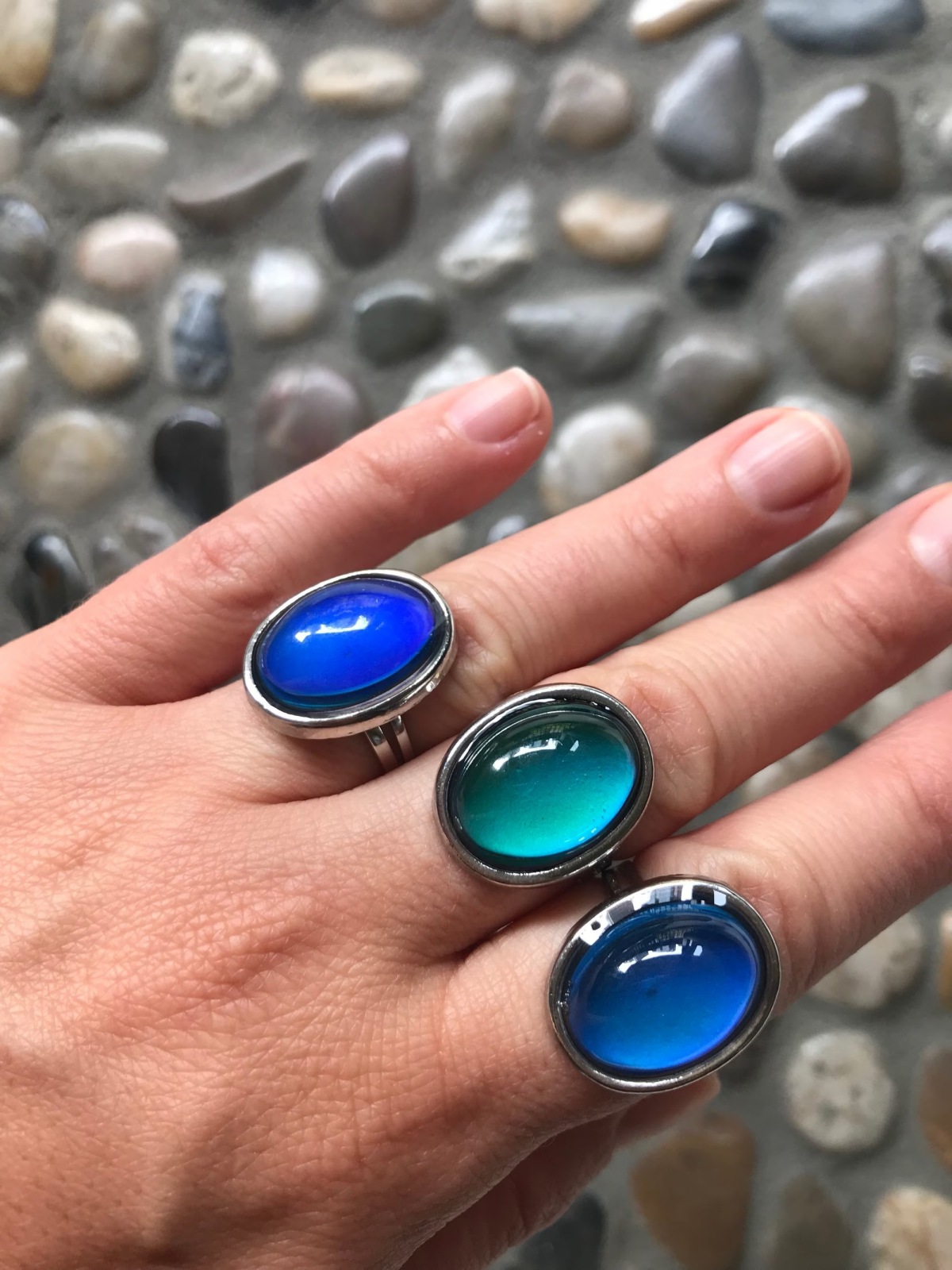
Care and Quick Fixes
A good mood ring can last for ages if you treat it right. Most problems are totally preventable.
First and foremost: Do not get it wet. I can’t say this enough. Take it off for handwashing, showering, swimming—everything. To clean it, just gently wipe it with a soft, dry cloth (like one for eyeglasses). If you have a sterling silver band that’s tarnished, use a jeweler’s polishing cloth on the metal part only, being very careful to avoid the stone and the seal. You can find these online by searching for a “Sunshine Cloth” or similar products; they work wonders.
Troubleshooting Guide
- My ring is stuck on black! First, warm it up. Hold it in your fist for a minute or give it a quick blast with a hairdryer on a warm setting. If the color comes back, you’re golden. If it stays black, the seal has probably failed, and sadly, it’s beyond repair.
- The color looks cloudy. If the dome is plastic, it’s likely covered in tiny scratches. If the cloudiness is inside, the crystals themselves have probably degraded over time. This also isn’t fixable, unfortunately.
- The color barely changes. This could be a low-quality ring, or it could just be your personal circulation. Some people naturally have cooler hands. Test the ring’s full range by briefly dipping it in cool, then warm water. If it changes color dramatically, the ring is working as intended.
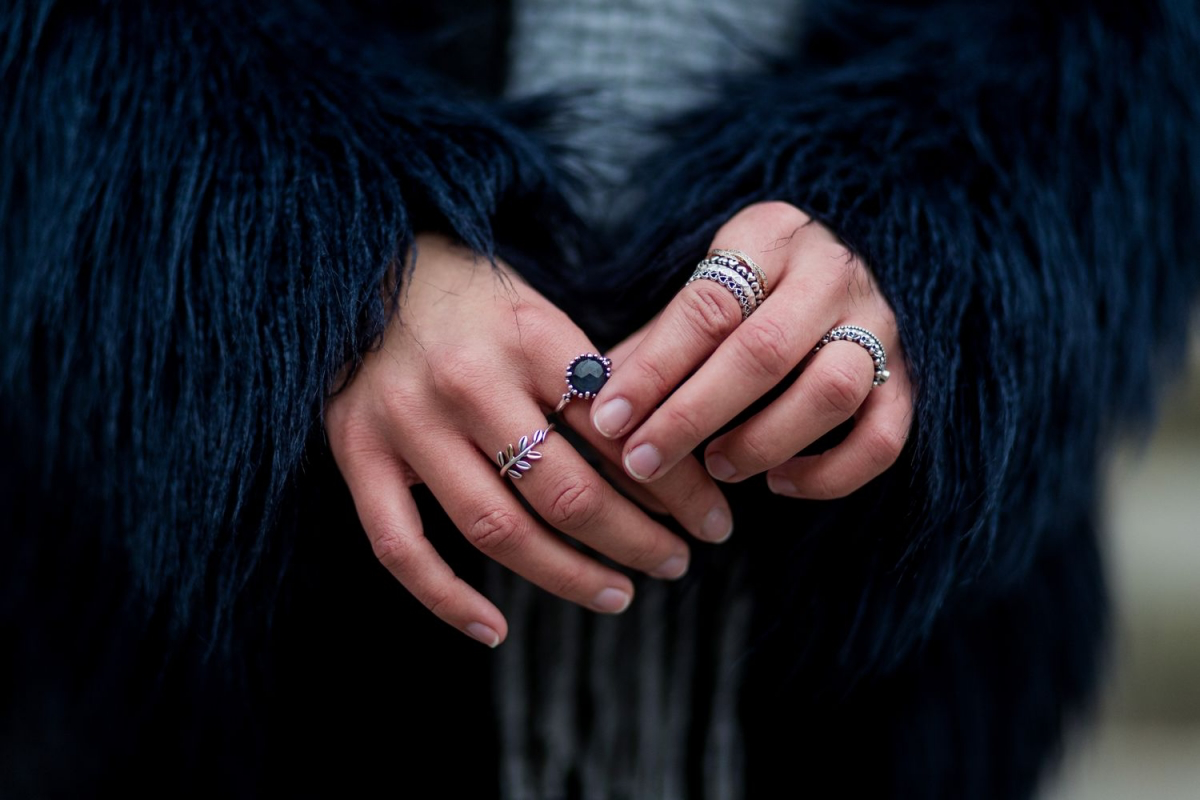
A Final Word of Caution
As a professional, I have to be clear: a mood ring is a novelty item, not a medical device. Don’t use it to diagnose stress or any health condition. If you have concerns, talk to a doctor.
Also, be mindful of allergies. If you have sensitive skin, stick to hypoallergenic stainless steel or sterling silver. And of course, like any small piece of jewelry, it can be a choking hazard for little kids.
At the end of the day, a mood ring is a fantastic conversation starter and a fun, wearable piece of science. By understanding how it works, you can appreciate it for what it truly is: a tiny, beautiful reflection of the simple warmth that flows through all of us.
Galerie d’inspiration

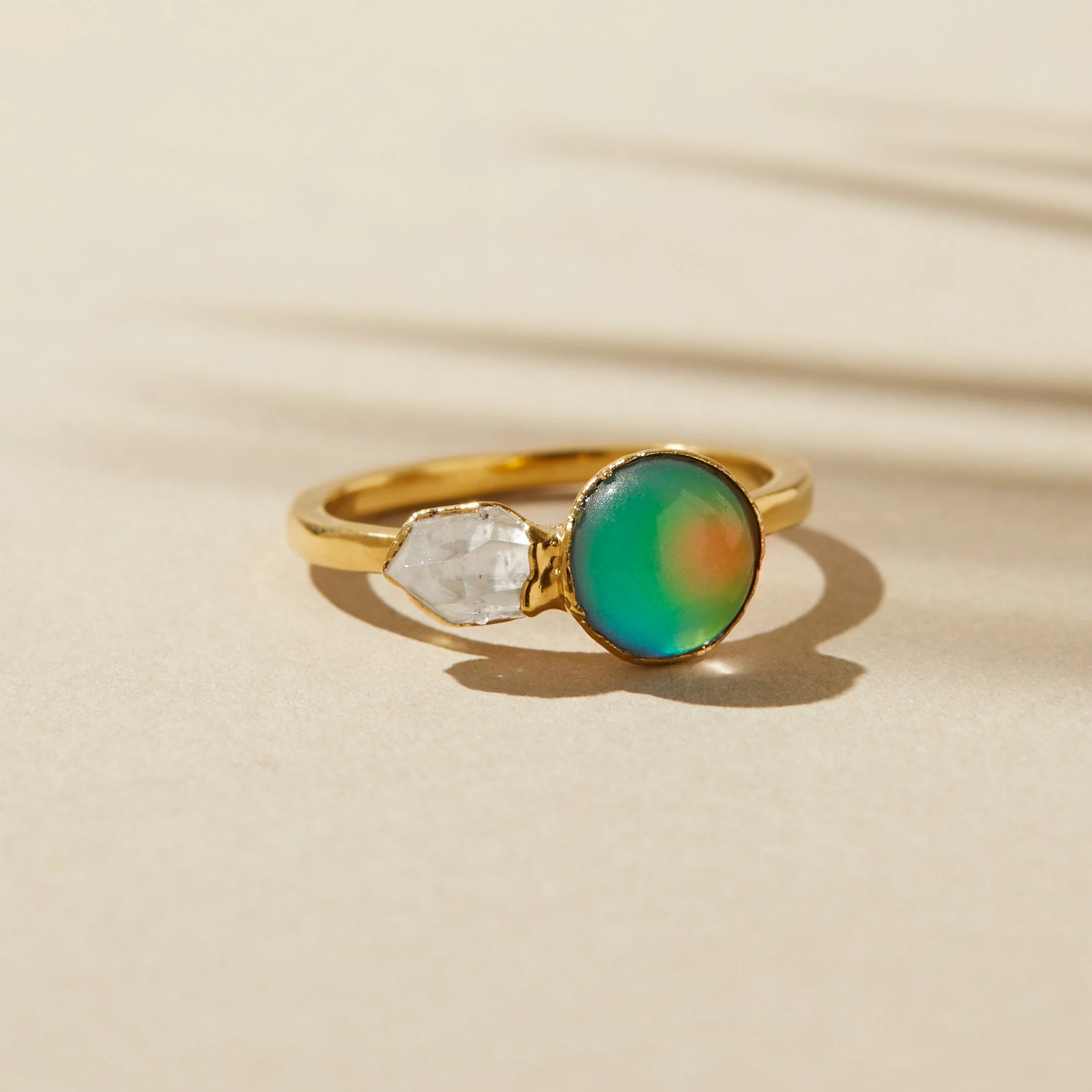
Your mood ring’s worst enemy? Water. Remember, that ‘stone’ is a delicate, sealed capsule. Submerging it in water during hand washing, showering, or swimming can cause moisture to seep in, permanently damaging the liquid crystals. The ring will likely turn black and stop reacting to temperature. Treat it with the same care you would a delicate watch.

The original mood ring was invented in 1975 by New York inventors Josh Reynolds and Maris Ambats, becoming a massive cultural phenomenon of the decade, perfectly capturing the era’s focus on self-expression and emotional awareness.
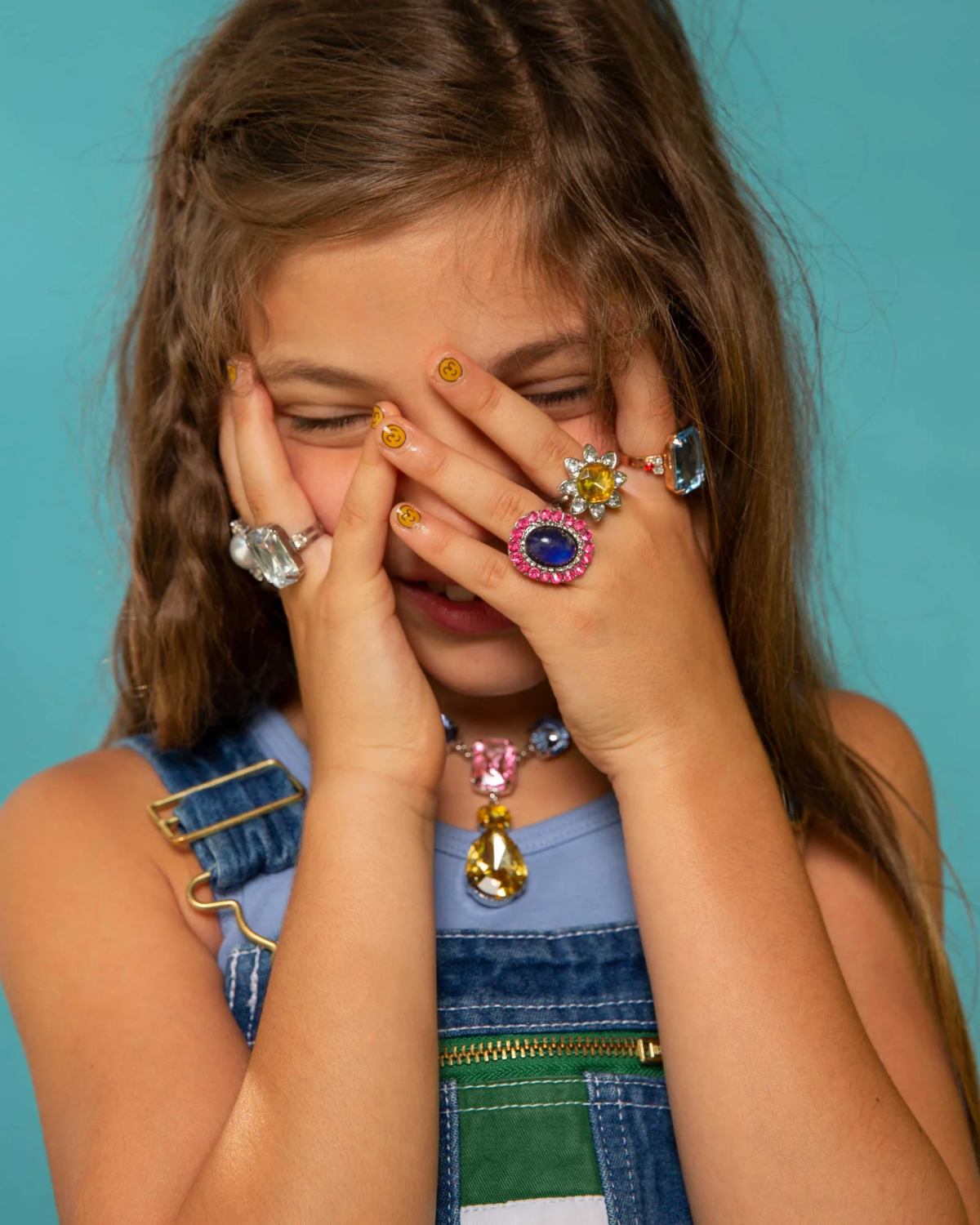
Are modern mood rings just a retro novelty?
Not at all. While the classic 70s style remains popular, contemporary jewelry designers are reimagining the concept. Look for minimalist designs where a thermochromic cabochon is set in sleek sterling silver or gold vermeil, often as part of a stacked set. Brands like Annoushka have even incorporated similar color-changing principles into high-end fine jewelry, proving that this fascinating technology can be both playful and incredibly chic.
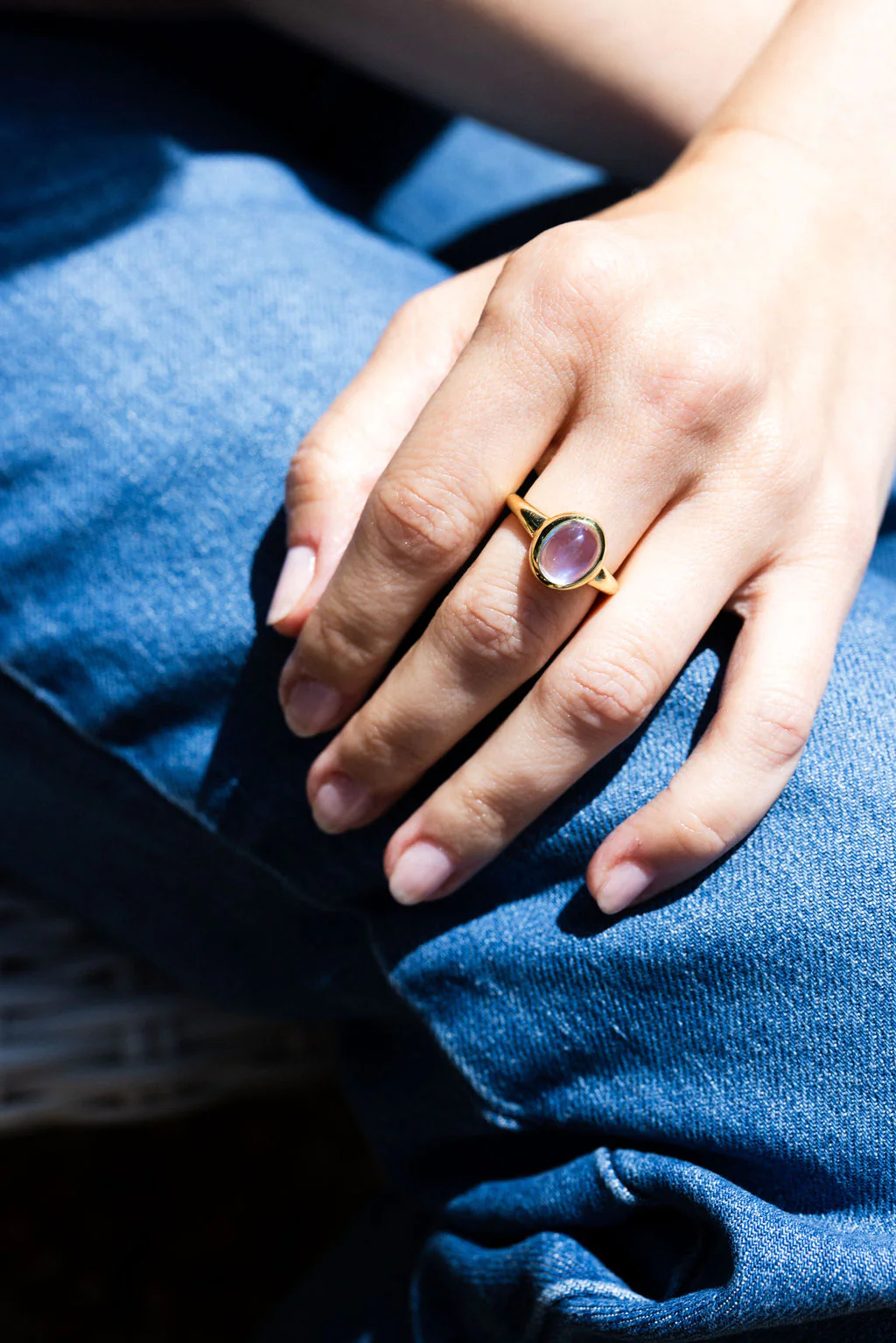
- A smooth, consistent color transition.
- A clear, un-cloudy dome over the crystals.
- A well-made setting that isn’t just glued on.
The secret? These are the hallmarks of a quality mood ring. Cheaper versions often have ‘blotchy’ color changes and are housed in flimsy, plated base metals that can tarnish or cause skin irritation. Investing in one with a sterling silver band ensures longevity.
Budget-Friendly: A classic, silver-plated mood ring from a brand like Spencer’s or Hot Topic offers all the nostalgic fun for under $15. They are perfect for a casual, retro look but may not last if exposed to water.
Investment Piece: For a more durable and refined take, look for rings on Etsy from artisans who set high-quality thermochromic cabochons in solid .925 sterling silver. These pieces resist tarnish, feel substantial, and elevate the concept from a toy to a piece of thoughtful jewelry.






